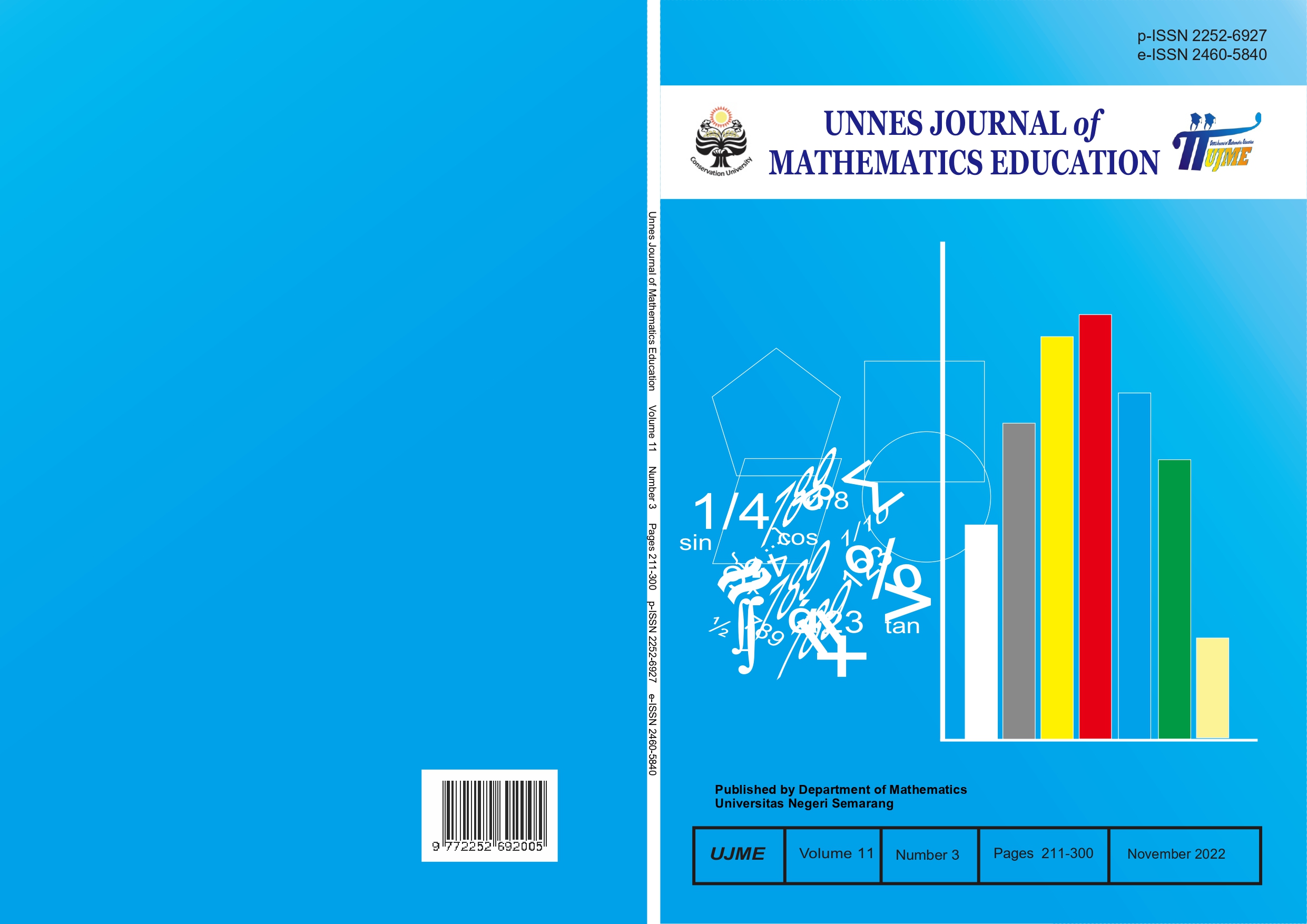Mathematical Creative Thinking Ability in REACT Learning Assisted by Dynamic Assessment in Terms of Student Learning Independence
##plugins.themes.academic_pro.article.main##
Abstract
Creative and critical thinking abilities and self-directed learning are critical components of mathematical education. This study aimed to ascertain students' capacity to think creatively and mathematically while learning the REACT paradigm through dynamic assessments. This study used a mixed-method approach in conjunction with a sequential explanatory design. The research population consists of students in the seventh grade at SMP Negeri 8 Semarang. The instruments employed are assessments of mathematical creativity, surveys on learning independence, and interview procedures. The findings indicated that (1) students' mathematical creative thinking abilities improved significantly when REACT learning was supported by dynamic assessments; (2) the average mathematical creative thinking ability of students in REACT learning enabled by dynamic assessments is superior to that of students in REACT learning; (3) there is a positive correlation between learning independence and mathematical creative thinking ability; and (4) the description of mathematical creative thinking ability is accurate. Students who demonstrate high learning independence perform admirably on all mathematical creative thinking abilities indicators. Students who have a moderate level of learning independence perform pretty well on the indicators of mathematical creativity. Students with a low level of learning independence demonstrate only one of the three indicators of mathematical creativity.
##plugins.themes.academic_pro.article.details##
References
Crawford, M. R. (2001). Teaching contextually: Research, rationale and techniques for improving student motivation and achievement in mathematics and science. CCI. Publishing. Inc. www.templejc.edu/prodev/distance-ed/crawford.pdf.
Hendriana, H., Rohaeti, E. E., & Sumarmo, U. (2017). Hard Skills dan Soft Skills Matematika Siswa. Bandung: PT Refika Aditama
Khaghaninejad, M. S. (2015). Dynamic Assessment: From Theory to Practice. LAP LAMBERT Academic Publishing.
Latifah, S., & Kusyeni, M. (2017). Efektivitas strategi REACT (Relating, Experiencing, Applying, Cooperating, Transfering) terhadap hasil belajar dan keterampilan proses sains di SMP N 22 Bandar Lampung. Jurnal Penelitian Pembelajaran Fisika. Vol. 8(2).
Lestari, K. E., & Yudhanegara, M. R. (2015). Penelitian pendidikan matematika. Bandung: PT. Refika Aditama.
OECD. (2019). PISA 2018 Results Combined Executive Summaries Volume I, II, & III. Avaliable at https://www.oecd.org/pisa/Combined_Executive_Summaries_PISA_2018.pdf (accessed on 26 June 2021)
Patimah, L., & Saniah, L. (2021). Penerapan Strategi Relating, Experiencing, Applying, Cooperating, dan Transfering (REACT) untuk Meningkatkan Kemampuan Berpikir Kreatif Matematis Siswa. Symmetry: Pasundan Journal of Research in Mathematics Learning and Education. Vol. 5(2): 187-196.
Poerwanti, E. (2015). Konsep dasar asesmen pembelajaran. PT. Remaja Rosdakarya.
Purnamasari, P., Annur, S., & Salam, A. (2016). Pengembangan bahan ajar melalui model pembelajaran react pada materi elastisitas. Berkala Ilmiah Pendidikan Fisika, 4(3), 209-221.
Siswono, T.Y.E. (2007). Konstruksi Teoritik tentang Tingkat Kemampuan Berpikir Kreatif Siswa dalam Matematika. Jurnal Pendidikan, Forum Pendidikan dan Ilmu Pengetahuan. Vol. 2(4).
